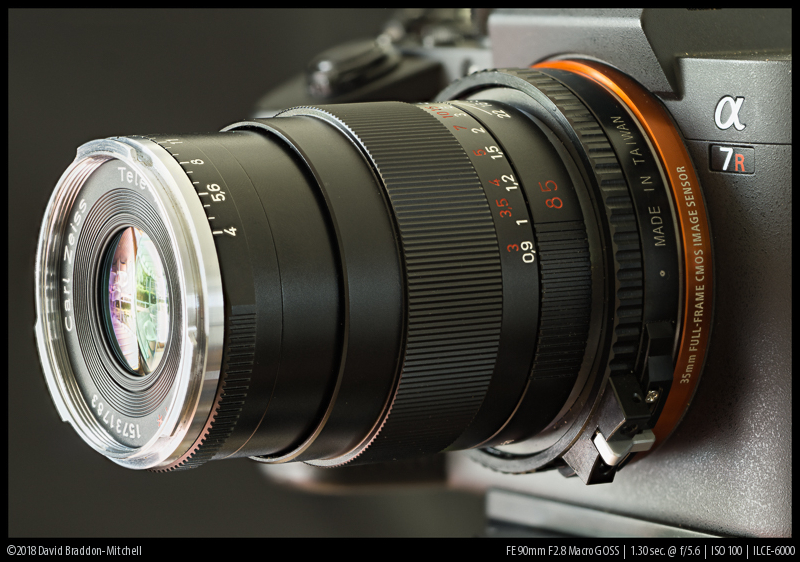
The Carl Zeiss Tele-Tessar T* 4/85 lens was released in late 2008. It is a ZM lens designed for Leica rangefinders, with a very pure long-focus five element three group construction. 85mm lenses may well not suffer from any issues on unmodified Sony sensors, and it’s light and compact for a high quality short tele. It has a reputation for being a wonderfully sharp and contrasty: is it good enough to be a great companion to your Sony, despite being relatively slow? This review may tell you.
Specifications
| Diameter | 54 mm |
| Length | 85 mm |
| Filter Thread | 43 mm |
| Weight (w/o adapter) | 310 g |
| Max. Magnification (w/o close focus adapter) | 1:9 |
| Close Focusing Distance from the sensor (w/o CFA) | 0.9 m |
| Number of aperture blades | 10 |
| Elements/ Groups | 5/3 |
Image Samples
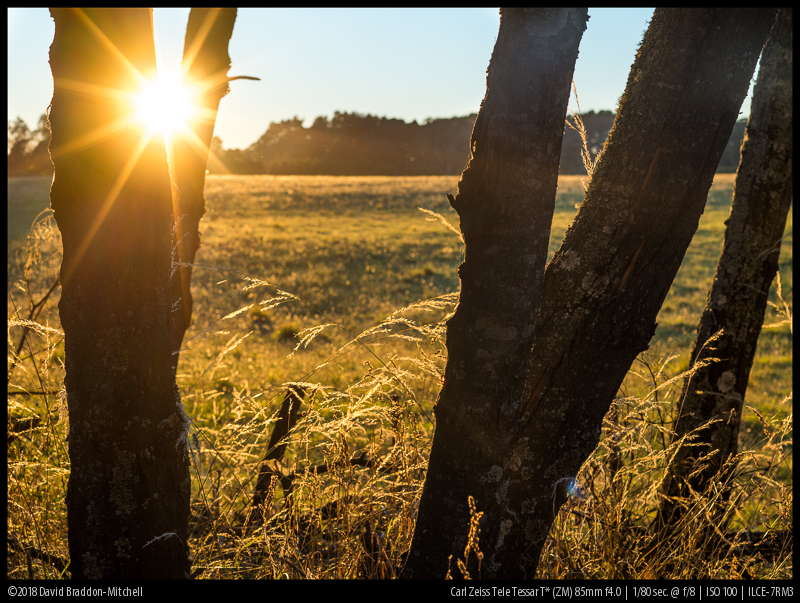
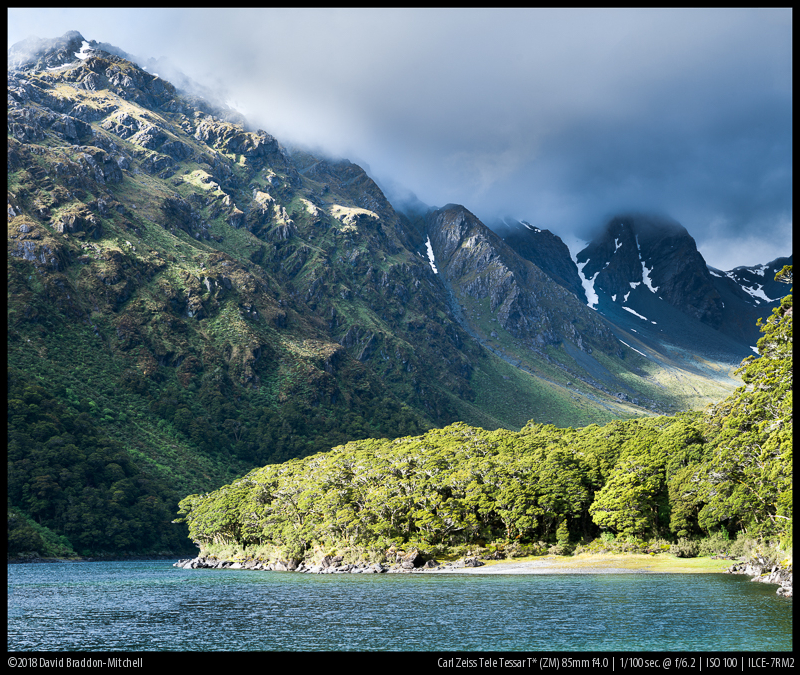
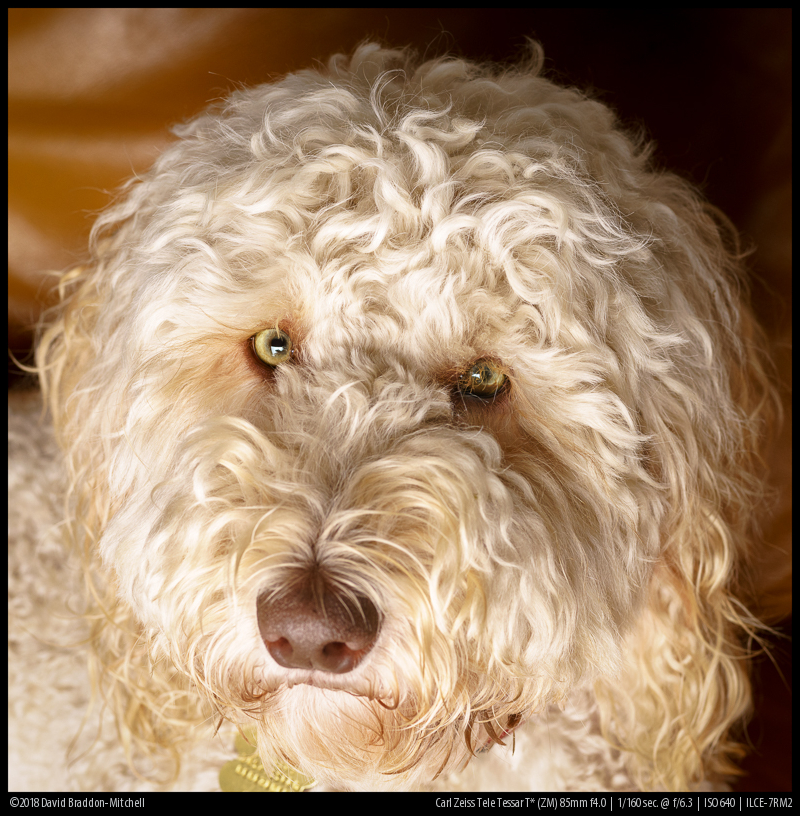
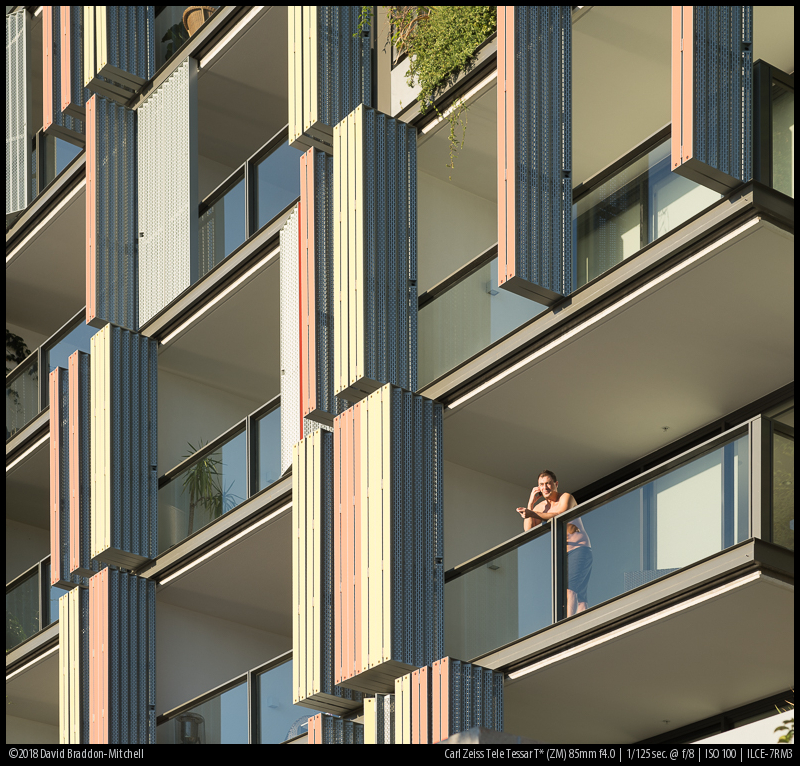
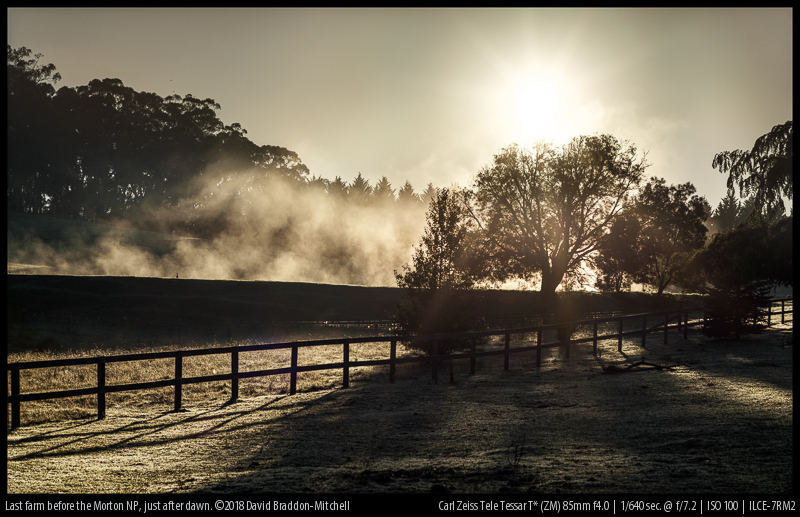
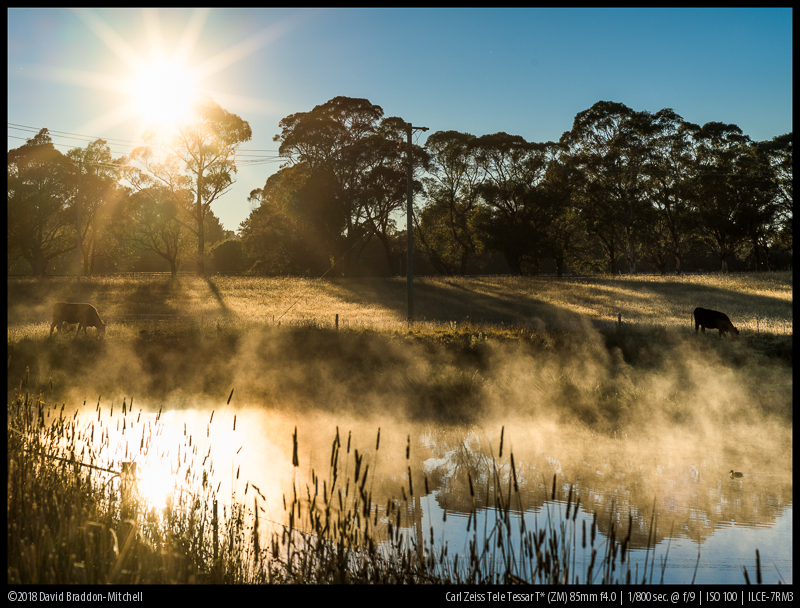
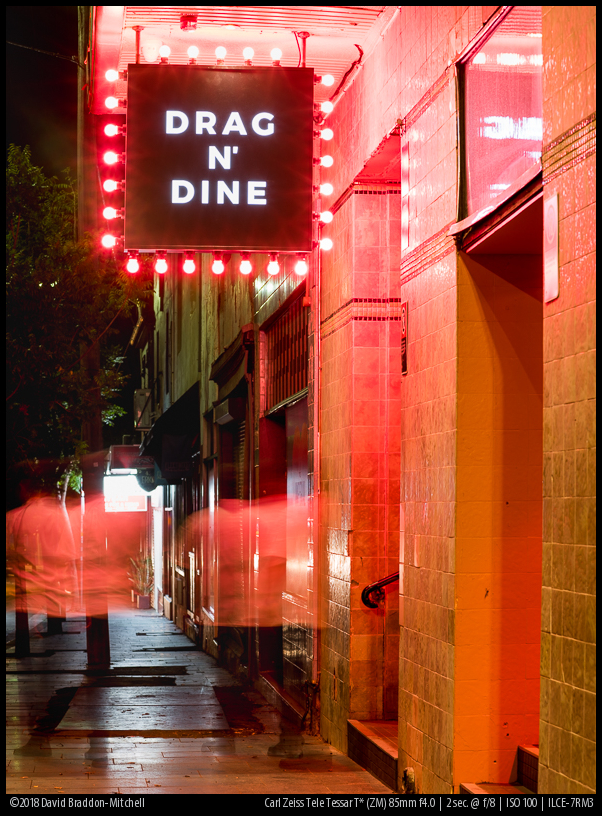
Contents
Build quality and handling
Like most ZM lenses it’s tight and precise, and as far as I know has only a little copy-to-copy variation. I has a nice luxurious mechanical finish. I have a had my copy for a couple of years, and it’s come on many long wilderness trips with no blemish to the finish, so I can say that the anodising is pretty impressive.
Focusing Ring
It focuses from .9 metres to infinity in about 85 degrees, with a beautifully damped helicoid. The focusing ring is made of metal, and is ribbed in a way which makes it very easy to find and grip
Aperture
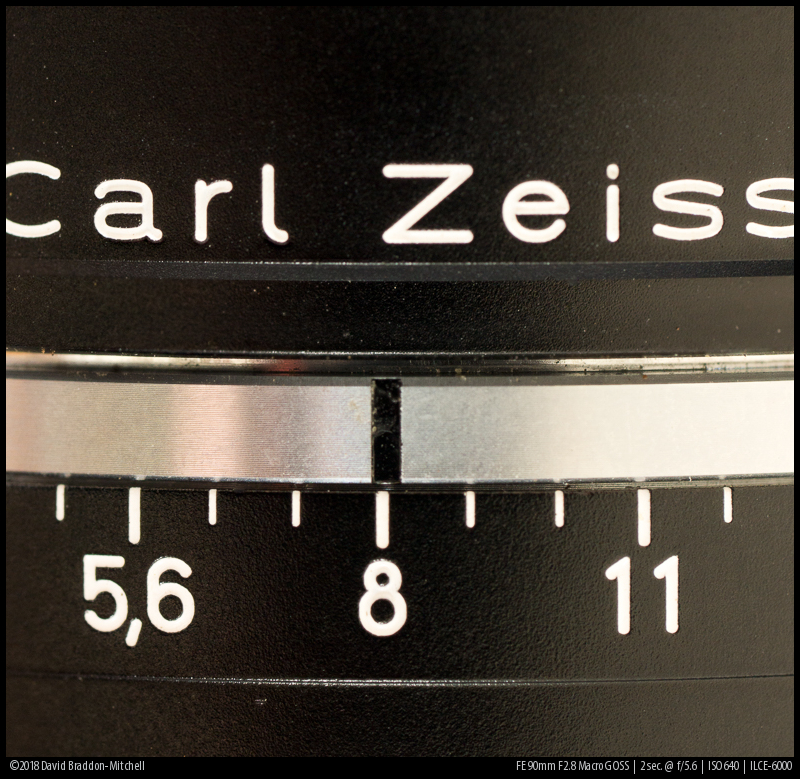
The aperture ring is a nice metal ring at the front of the lens, and stops down from f4 to f22 in 1/3 stop increments, with a very precise click. There are also easy to see 1/3 stop markings. The aperture ring is nicely ribbed except for the smooth area with these 1/3 stop markings illustrated above.
Hood
The Zeiss hood is a very nice piece of metal which spring connects to the bayonet at the front. It is, however, absurdly expensive at over USD 100! You can pick up a cheap metal hood with a 46mm thread on eBay for almost nothing.
Adapting the lens to Sony
I recommend the latest version of the Hawk’s Factory helicoid adapter for this lens. The lens performs so well at close distances, that adding some extension will do no harm so a helicoid adapter makes sense. The Hawks adapter has two features no other helicoid adapter has both of. It’s very light for a helicoid, at around 50g, and it has infinity tuning, which is fantastic: you can adjust the lens so that infinity is exactly at the hard stop when the helicoid is not extended. That’s a real convenience for landscape. You can get one via our affiliate link at B&H
Size and Weight
Size and weight are the reason this lens is so interesting. As Jim Kasson has shown, small light teles often give better performance hand held than larger ones, even when the larger ones are optically superior and this shows on a tripod. We are not talking visible camera shake here: just subtle degradation of sharpness that takes a superior lens like the Apo Sonnar 2/135 down to level of excellent, but clearly not-as-good-on-a-tripod, lenses when they are hand held. At 310 grams, or 360 with a decent close focus adapter, this lens is a hikers friend. I for one don’t often want longer lengths for landscape—not enough to want to carry them along with food and shelter anyway. And if you want a prime kit rather than a zoom, this lens augments nicely at the tele end.
Optical performance
These results are based on use with a Sony Alpha A7rIII.
Flare Resistance
Flare resistance is usually very impressive. There three images show the sun in the frame with heavy shadow lifting in three positions. In every location the result is outstanding.
As with many lenses, it is possible to provoke a dramatic contrast loss with the sun just outside the frame. What is fairly remarkable though is that it’s only a narrow range of positions which can do this, all of which can be easily dealt with by shading with a hand. If you preferred, a longer hood would eliminate this without causing vignetting—but personally I find hand shading easier because it’s very obvious when it happens, and it keeps the lens compact.
Here is the worst I could provoke, showed with the same position with hand shading.
Sunstars
Lovely sunstars ; this image of the sunset breaking through the forest has has a lot of shadow lifting, and there is no loss of contrast outside the immediate sun area, no artefacts, and a nice crisp sunstar.
Bokeh
I’ll start with a fairly distant and busy background at roughly head and shoulders portrait distance.
Of course the maximum blur is a bit limited by the aperture, but given how busy the forest scene is the lens renders nicely, with no onion rings or serious outlining. A better job that any zoom I’ve used at f4 and short tele.
To put this in perspective: while you probably would not choose this lens if portraits were your primary use case, you can get quite a bit of blur at f4, and with any luck both eyes in focus. And the bokeh is plenty smooth. Micro 4/3 users often use a 1.8/45mm lens as a portrait lens, and do very well; and that class of lens has close to the same level of blur as a 4/85 on full frame (and rather less system resolution than a 4/85 on FF).
Chromatic Aberrations
Axial Chromatic Aberrations
The lens shows some axial CA at close distances; the crops below are from around the minimum focussing distance. Here is a tendency to slight magenta discolouration just in front of the focus point (0) and green just behind it. There is also just a touch of violet or blue fringing wide open. This is good performance. I have seen APO lenses that are worse, though the very best modern APO lenses are a bit bitter. It improves at f5.6 and again by by f8. I have never noticed it as a problem in the field, except as slight and easily correctible fringing around bright highlights wide open. It is, however, stunningly sharp at these distances.
Lateral CA is very low.
Vignetting
Section to come
Distortion
Section to come, though I will give you a spoiler: not much!
Resolution
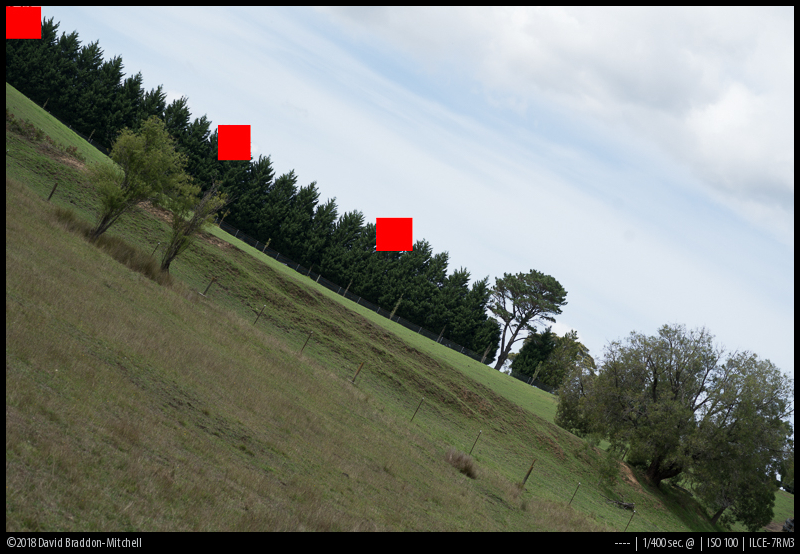
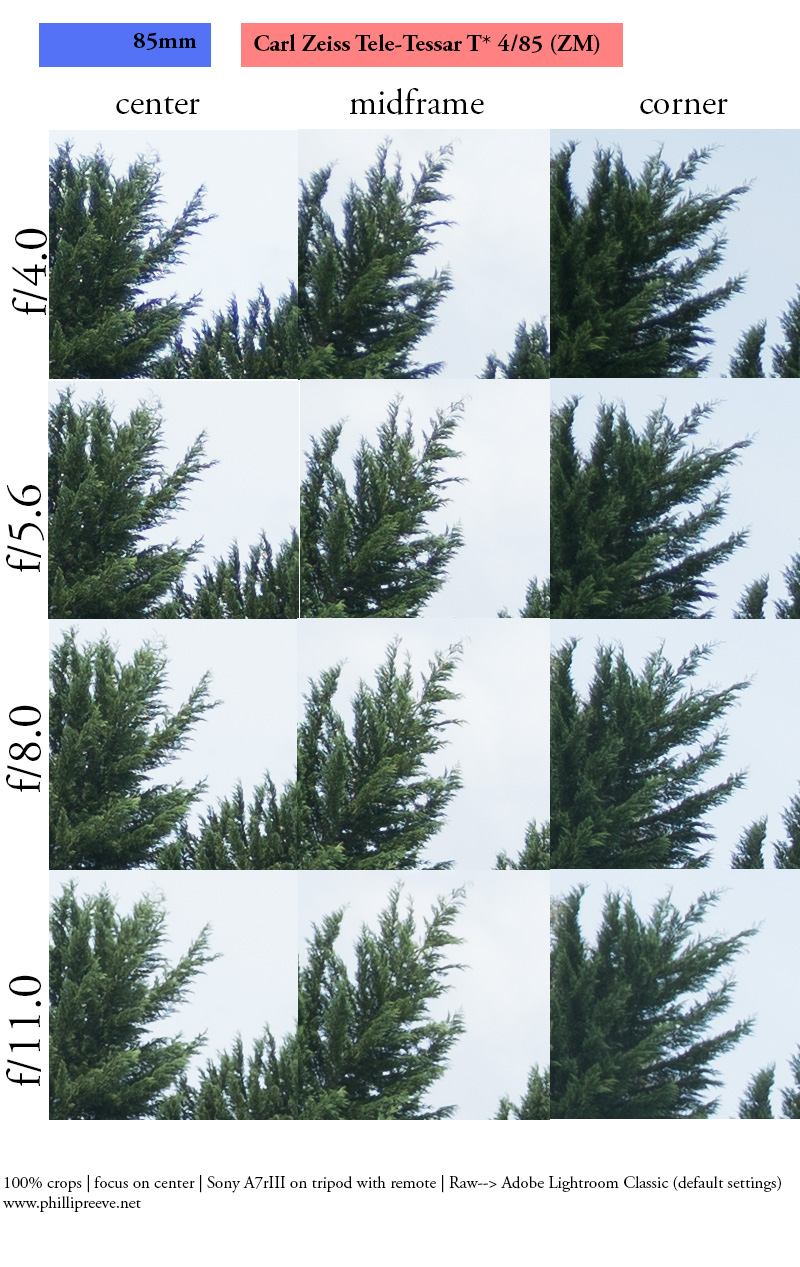
f/4: Excellent in the centre and mid frame, the corner is very good but just discernibly less good a than other apertures.
f/5.6: Outstanding everywhere.
f/8: Outstanding everywhere.
f/11: Diffraction is reducing contrast just a tad.
This is remarkably good performance. You can use this lens with fantastic results at any aperture and any location in the field. The wide open corners are the only area where, when pixel peeping, you can see a slight difference from elsewhere, but it’s still very good here and no image would really be the worse for this even of performance in the corners. F11 shows the effects of diffraction across the field, which is a good sign in a lens. The only remotely negative thing about this is that the centre image wide open shows a touch of LoCA (in the form of purple fringing) that reinforces the close focus test. I found it easy to correct. No visible LaCA.
A note on our testing procedures, which might get incorporated into a future article. We don’t do numerical tests, bench or IMATEST. I would guess that if we had an optical bench, we would see somewhat higher numbers on some recent lenses (perhaps the Loxia 85 and Otus 85) at mid apertures. But I doubt that this would show up in these 100% infinity crops. Does that mean our test is not sensitive enough? We don’t think so. Something that is not visible at 100% on a 42MP sensor surely should play no role in choosing between lenses, even if it’s interesting for optics geeks. What about future 100MP sensors? Well the difference between 42 and 100 is not massive. It’s possible that something invisible might become visible. But it won’t become significant.
Summary: it’s important to know what the visual effects of resolution is, and actually seeing details is what will do that.
Alternatives
Zeiss Loxia Sonnar T* 2.4/85: This is the obvious alternative. It’s 1.5 stops faster, and in many ways a better, state of the art lens. It’s visibly a little better at f4. But by f5.6, according to Fred Miranda’s tests, any theoretical improvement that the Loxia has is no longer visible with a 42MP sensor at 1:1. As an all round manual 85 mm the Loxia is probably a better bet, though almost twice as expensive, as the extra speed (and the superb wide open performance which makes being only f2.4 less of a hassle) makes it more versatile. But for the hiking purposes for which I use the ZM (I prefer AF for a portrait 85) the weight, size and cost reduction for a very similar look makes the ZM the right choice.
Sony FE 1.8/85 This, and the clearly even higher resolving Zeiss Batis 1.8/85 (according to the average of ten bench tests of each lens by Roger Circala) are very good lenses. Once again they make good all round 85mm lenses. Neither, though, have lovely sunstars, and this is something that matters a lot to me, especially around sunset and sunrise, and in cityscapes at night. The Sony is not much heavier than the ZM plus adapter at 371 g, though it’s bulkier which matters for the hiker. I don’t have access to direct IQ comparisons with the Sony, but I think the Batis is at least as good as the ZM in terms of resolution and contrast, but not sunstars.
Zeiss Contax G 2.8/90: A touch smaller and lighter. I think it would make a very fine hiking lens, though I would myself choose the ZM for reasons of sunstars. Also the Contax is a bit clunky on adapters, and the best way to use it is to get it helicoid mounted which is either a difficult or expensive job. I haven’t used it myself, though my colleagues have. My impression from comparing samples and crops without doing a direct AB is that the ZM is a little sharper and contrastier across the field.
Zeiss Contax (C/Y) 3.5/100: A very good lens of which I still have a copy, and a good hiking choice. I think the ZM is a little ahead in resolution and contrast and bulk, and I don’t like the look of the sunstars on the C/Y at all. But it’s much cheaper, and a fine choice.
Zeiss Contax (C/Y) 2.8/85 The A mount 2.8/85 is said to be much the same as this too, but I can’t confirm that (except to say they have the same simple overall optical design, but the devil is in the detail here). Not bad when I used it briefly, but not as well behaved as the ZM (or indeed the 100), and worse sunstars. But small and light and it would be a good budget choice if you could find one at a budget price. But in decent condition they rival the ZM for price, so not good value.
Sony G 4/70-200 FE : The ZM is a little better in the outer field at every aperture at around 85mm. But these lenses aren’t really comparable. If you need the convenience of the zoom, and your application is one which allows you to carry it, you won’t be looking at the ZM. You should be aware that zooms from everyone vary a lot in where they are best, so a review of one copy won’t tell you want to expect. The review of the 70-200 by Phillip linked to above clearly shows that his copy was worst around the outer field at the short end. My copy is good there, and worst in the outer field at the long end.
Sony G 4/24-105 FE: This could be a good all in one solution for many people. I’ve seen comparisons online which suggest the Loxia is visibly nicer across the field at 85mm, which if true means the ZM probably is too. Sunstars not nearly as nice. But again, if you are looking for a zoom in this range you won’t be looking at the ZM.
Leica Summarit 2.5/75: This lens is very good, and can sometimes be found at a non Leica-like price. It has more LoCA than I’d like at f2.5 (much more than the Loxia 85 for example) but from f4 it’s just as good as the ZM, perhaps a tiny bit better in the corners at f4. The 22 pointed sunstars aren’t bad, but I prefer the ZM in this respect. Which of these you prefer may come down to focal length. EDIT: I have since performed a direct comparison of the corners of the Summarit against the ZM from f4. My recollection above is not quite right. The ZM is slightly ahead at all apertures until f8; and the Summarit has a touch of purple fringing the ZM lacks. Still, performance is close enough that choice should probably be on the basis of other criteria.
Other Lenses These are the lenses I have direct access to and which I consider rivals (I haven’t mentioned any f1.4/85 lenses, for example, because I don’t consider them in the same class. No-one chooses between an f1.4 and and f4 85 mm lens. You choose the one that is best for your use, or you choose both if you do very different things.) No doubt there are other lenses I could use to compare with this lens, but I don’t have copies of them, so when you write in the comments “please compare this with lens X” the answer is “Sorry, No”.
Conclusion
pros
|
average
|
cons
|
If your usage is primarily landscape then I think this is probably the most sensible short tele you can get. It’s not too expensive, and the quality at landscape apertures is superb, combined with lovely sunstars. The Loxia 85 might measure a touch better (and give you more versatility outside of landscape) but I see no reason to pay the extra money and carry the extra weight for landscape.
If it’s for landscape that involves hiking, then I think this lens is definitely the way to go, and I highly recommend it. I doubt that anyone will release a lens this good and compact for many years if ever. Our best hope for an update including a native mount might have been the Loxia series, but they chose to go with a slightly faster and therefore bulkier though more versatile design.
Of course you can take lovely portraits with this lens, but a lot of people prefer more blur and AF as well, so I don’t imagine many people whose principal interest is portrait will buy this lens. But I think it’s well worth getting in addition to another lens of similar focal length if, for example, you have a GM85 or the big Sigma so that you won’t be weighed down on landscape expeditions.
The Carl Zeiss Tele-Tessar T* 4/85 can be purchased via our affiliate links at Amazon.com or else B&H Photo Video for about $US840. You can get it new on eBay.com here, or you can get it used on eBay.com here. Used prices vary a lot; you often see people trying to sell them for more than the new price. If you are patient you should be able to save up to $150 buying used.
If this review was helpful to you, please consider using one of my affiliate links or sharing the review with others. Thanks ?
Some more image samples
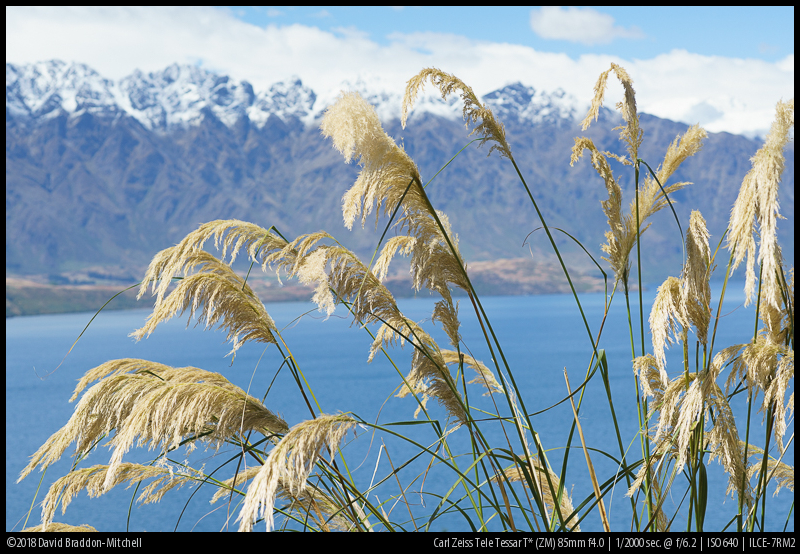
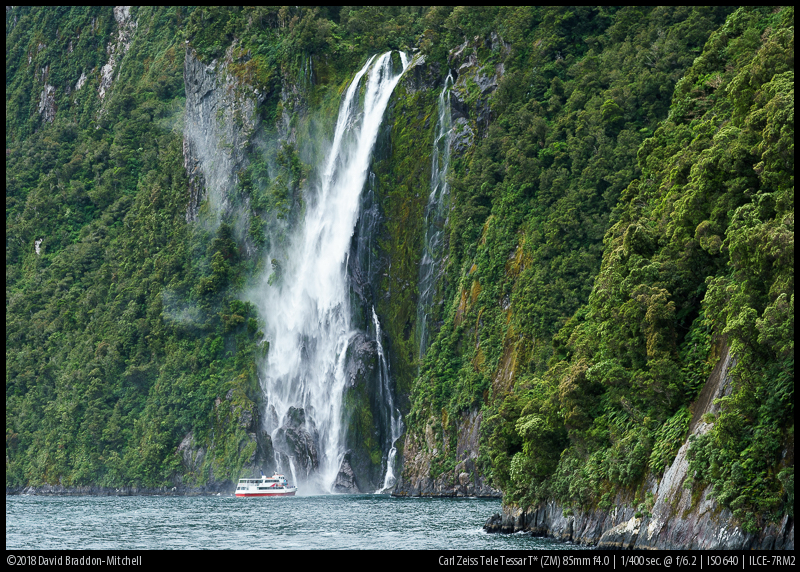
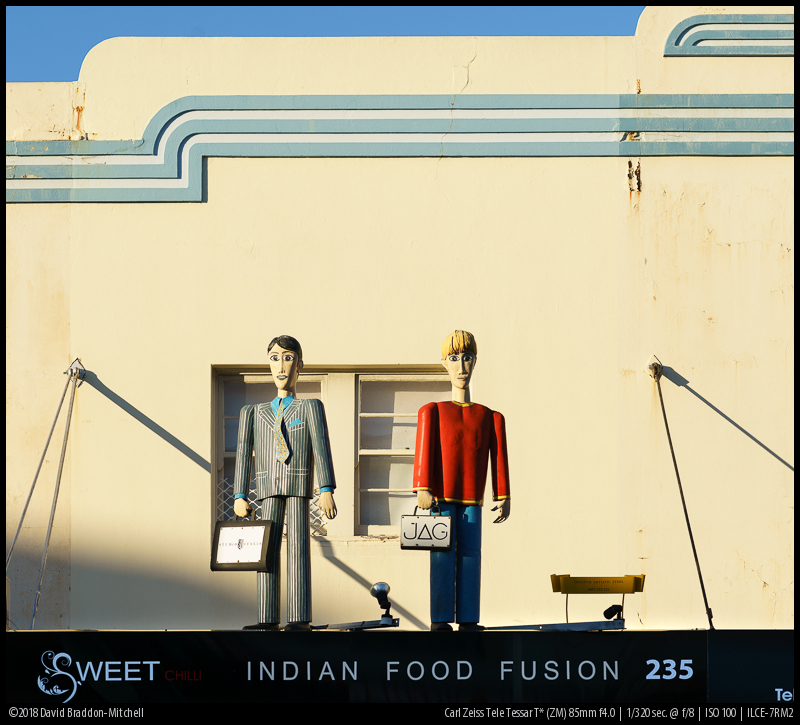
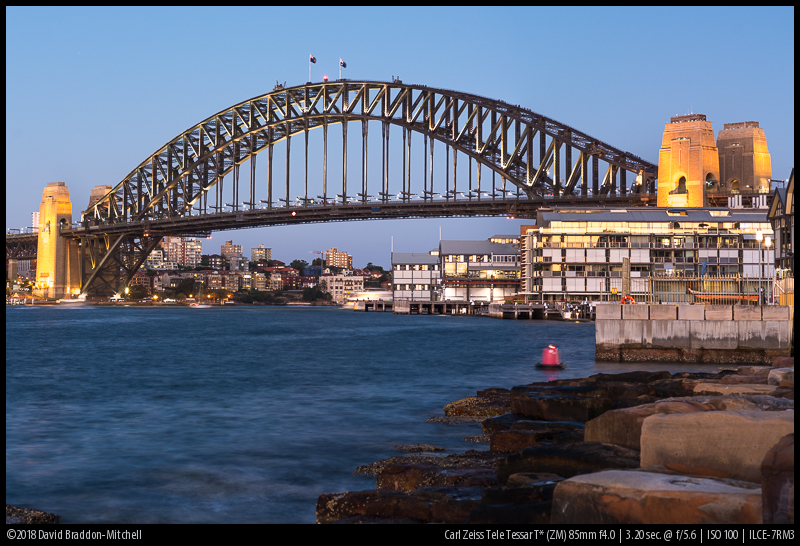
This site contains affiliate links. If you make a purchase using any of the links marked as affiliate links, I may receive a small commission at no additional cost to you. This helps support the creation of future content.
David Braddon-Mitchell
Latest posts by David Braddon-Mitchell (see all)
- Laowa FFii 90mm F2.8 CA-Dreamer Macro 2x: getting close! - August 21, 2022
- FLM Ballheads: a rediscovery - February 4, 2021
- Laowa 14mm f4 Detailed Review - December 31, 2020

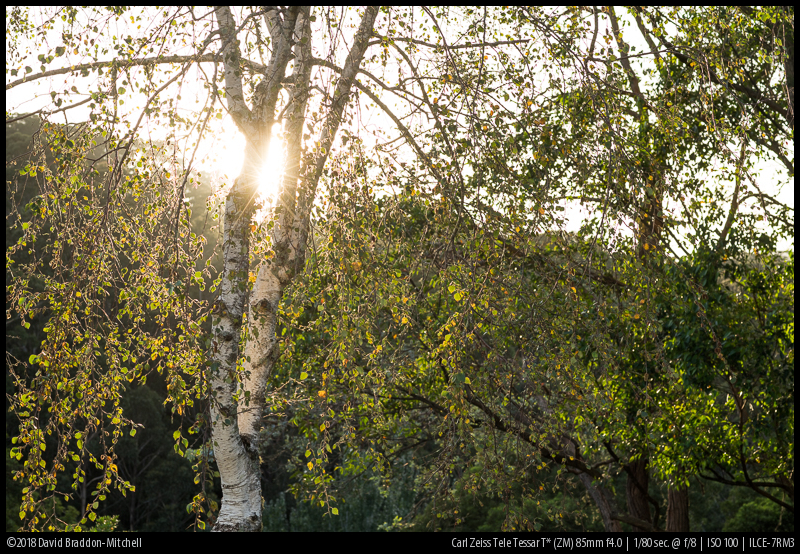
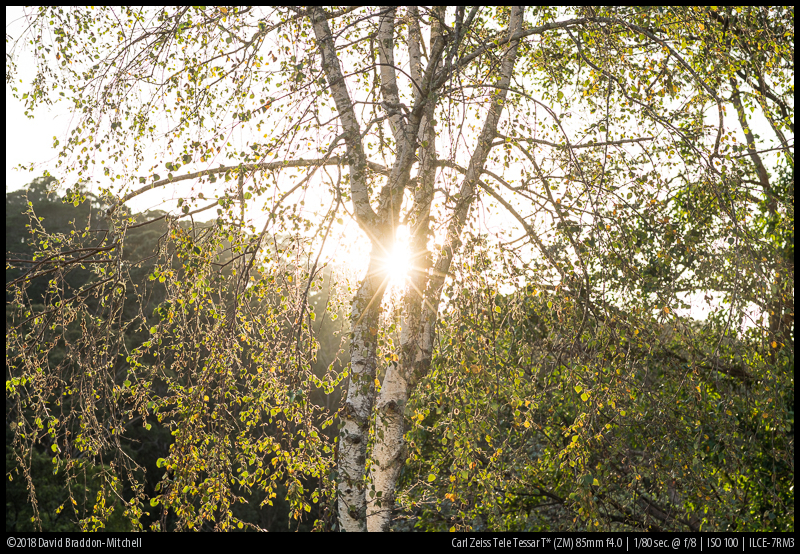





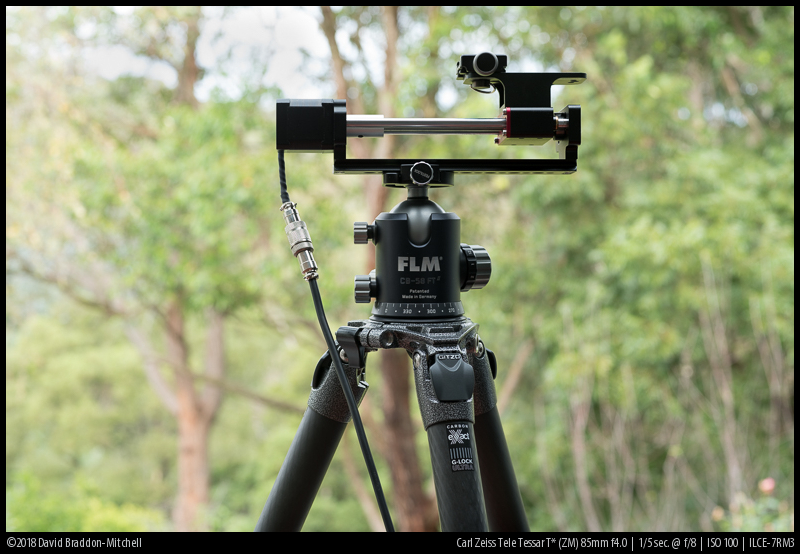
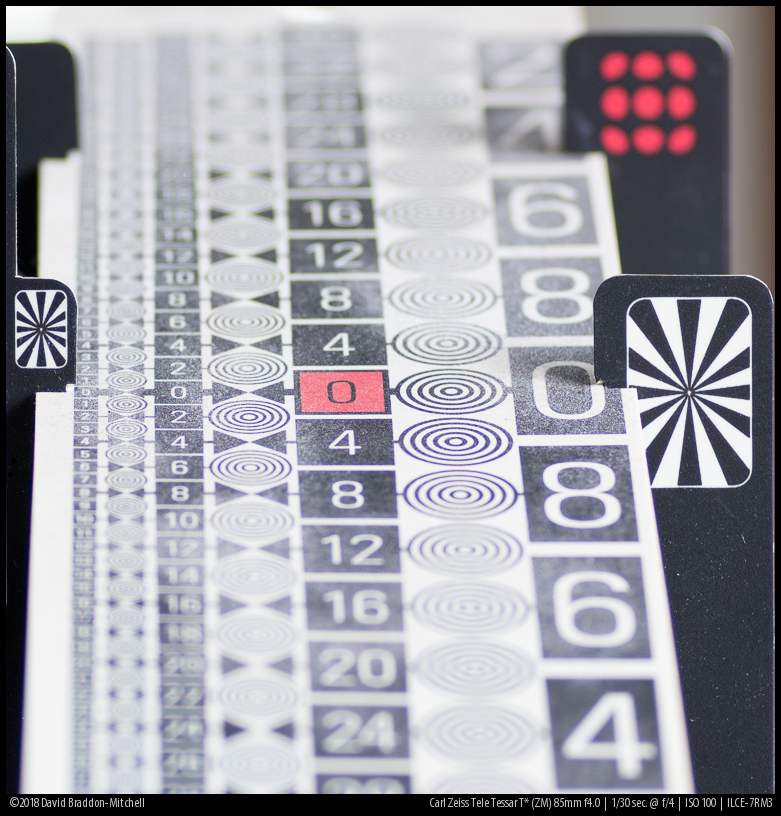


Hi, nice work!
In impressed with This lens.
I have a leitz summicron R 90 and a Tokina “bokina”
I am wondering how good are This lenses por landscape because i want to buy a lens like the zeiss or the sony 85.
I will worth it in your opinion?
Thanks!
It really depends what you want.
If it really is landscape you want, I think I would choose the Zeiss, for the sunstars. Both are very sharp.
The Sony is more versatile though, if you want portraits, and if you like AF that will make a difference.
Very nice review as usual. There are results from Minolta MD 28/2 in the vignetting and distrtiopon section though.
Very interesting piece of glass anyway.
Oops!
Thanks. Fixed!
May I suggest Voigtlander 75/2,5 Color-Heliar LTM
compact, sharp, well built, lovely sunstars, cheap
You may suggest it, I used to own it. Great value. I replaced it with the Leica 2.7/75 which is a little better wide open and has better contrast, but is larger and more expensive. I sometimes regret that.
Yes I agree it’s a nice lens, and also nice and small, worse CA wide open, lower contrast, but an alternative I ought to have mentioned, especially as it can be had for less.
I just bought that one. Did a few test shots outside this weekend compared to the 65mm F2. Yep, not as sharp- which is a good thing! I’d be regretting the 65 purchase. It is small and a blast to use though. Great bokeh and have gotten some wonderful portraits in my short usage. Total score for under 300 dollars. Plan on doing some film with it as well.
Link of Leica Summarit 2.5/75 leads to Voigtländer Ultron 28mm 2.0 page.
Thanks! Fixed.
I’ve been looking for a tele prime for landscapes that is
-small (for my nisi 70 filter system)
-light
-has nice sunstars
and you came with this review! Till now i thought, loxia is the only way to go, but this seems a very nice alternative.
Thank you.
A pleasure
Excellent review, David, thanks for the great work! Just a couple of corrections:
“ou can find most of the images in this review and more in full resolution in this” — looks like a fragment of a sentence accidentally left behind.
Also, further down the page, the link to more sample images leads to a Minolta MD 2/28 flickr set.
Cheers!
fixed..
Thank you, David. Nice review as ever!
I had been thinking on getting a ZM 85/4 as the tele lens for my travel kit (to be used on both Sony mirrorless system and film Leica M system). However, in the end I settled for an used Leica Elmarit-M 90 (the latest E46 version) for the extra 1 stop aperture. While according to their MTF charts the Elmarit-M 90 and ZM 85/4 perform similarly at around F/4~F/5.6, it turns out that the Elmarit-M 90 has rather heavy chromatic aberrations, both LoCA and LaCA, compared with samples from the ZM 85/4. Also the Elmarit-M 90’s image corners aren’t particularly sharp even at F/5.6 or F/8 when adapted on my A7R2 . I’m not sure if this has something to do with Sony CMOS’s thicker stack glass or the precision of my Voigtlander VM-E adapter.
Despite that the Elmarit-M 90 was hailed as Leica’s best M-mount tele lens before the Apo-Summicron 90/75, it seems the ZM 85/4 is a stronger performer! In terms of balance between image quality, price, and size/weight, there are no better lenses than ZM 85/4 as a light-weight landscape short-tele lens.
Try the Leica Macro-Elmar-M 90 4.0…
243 grams, focuses to under 80cm natively, IMO much nicer than my 90mm R Elmarit, collapsable (which also makes it slightly fiddly in use). Unfortunately more expensive than the Zeiss.
I’d be curious to see a direct comparison between it and the Zeiss.
I would curious too, but it’s very expensive, and the Leica and Zeiss MTFs which are fairly reliable (Leica do pretty good computer simulations, Zeiss average the measurements of ten actual copies which is even better) suggest it performs similarly (slight edge to Zeiss in the corners stopped down in MTF40). The Leica has ten blades but a strange arqragmentment where the geometry is different at different apertures so it would be good to know what the sunstars are like, as well as flare. The Hawks adapter does a pretty seamless job of close focus on the Zeiss. The macro adapter for the Leica is nice, but it’s an open question wheter it would do better than achromats and/or a helicoid extension on the Zeiss.
So interesting, not tempting enough to buy a copy at those prices, but if anyone lends one of us a copy….
Oops, accidentally posted the previous message unfinished…
An update 6+ years later (continued):
I had both the Leica Macro-Elmar-M 90 4.0 and (later) the Zeiss ZM 85 4.0.
While both were capable of first class results, in the field they had a relatively low number of keepers, due to the nature of manually focusing short (and not so short) tele lenses on my A7RII.
I kept neither.
The Leica I remember as being a bit fiddly to use due to the ergonomics. The Zeiss was nicer to use, but I decided not to keep it anyway.
I have kept the Loxia 85, probably because zooming while focusing makes it more practical: but it sees relatively little use largely because of its weight (despite its fantatic image quality) though for the right situations and subjects it’s probably unbeatable.
The Tokina “Bokina” 90 2.5 is also going, because of the general contactless MF difficulties, tendency to flare, and similar weight with adapter to the Loxia 85 & the Sony 90 2.8 Macro (which will also do 1:1).
Hope this can be useful to someone…
P.S. At the moment, my recently acquired Sigma 90 2.8 seems to be my default landscape short tele (when the Loxia 85 is too heavy, etc.), but time will tell.
Great review. Just a heads up, under the contax g 90 you have a typo:
“I haven’t used it myself, though may colleagues have”
Thanks for the hard work and contribution David! Never picked up a ZM 90/4, but looks like it could be a good hiking partner.
Thanks, fixed!
Hi David, enjoyed reading the review, informative of course. Would you be able to add some portraits? I take your point about the blue but still… I have Sony 85/1.8 but find it bulky and don’t really enjoy autofocus as I’m spoiled by zm sonnar 50 🙂
* about the blur * And not blue as autocorrect thought.
I might do that if I can find permission from someone!
The bokeh images give you some sense of what the bokeh can be like at portrait distance.
You can certainly get nice portraits with this lens (and as I said in the review you get about as much blur as with dedicated M43 fast portrait lenses) with very neutral bokeh and a lovely sharp subject.
I suppose many people would prefer a faster lens, but that’s up to you. If you want a compact, faster, manual focus lens for portraits there are some options around. Fred Miranda thinks the Leica Summarit 2.5/90 is a nice example that might suit you (or indeed the 2.5/75 which I have) Neither are absurdly priced though not cheap. The 2.5/90 is said by him to be great at portrait distances, but not at infinity where the 4/85 will perform much better. But if it’s a small manual lens dedicated for portraits then it’d be a great choice. The 2.5/75, which I have, performs well at both portrait distance and infinity. It makes a good compact short tele. It’s down to two things: is 75 long enough (I’d prefer 85 usually) and if you want landscape too how you like the 22 pointed sunstars of the Leica.
First of all, thanks a lot to all of you for your passionate work!!
When I go up the mountains with my A7II I always take with me a Leica Tele Elmarit 90 with excellent result (to my taste). It’s very light and compact (as the zeiss 85/4), it was one of Mandler’s lenses and you can buy an used one in very good condition for less than 500 euros (the first “nano” version is a bit more expensive). I would be really glad if you could try it to have your much more valuable opinion.
Another suggestion which, according to me, would make your reviews even more interesting would be to quickly compare all these classic manual lenses with the state of the art Sony 24/70 G zoom. Thanks a lot. Umberto
Thanks Umberto.
I’ve never used the tele elmarit, and doubt if I will so I’m afraid I can’t help you, since I’m happy with what I have.
On the other hand it’s possible one of the team located in Europe might be interested in reviewing it, but only if someone lends it to them.
As for the GM 24-70, Fred Miranda from his own tests says that the ZM is better by a fair way even than that zoom at 70mm (the long end is usually the weakest point of the GM). I haven’t directly compared myself. But then I don’t think it’s an obvious comparison: small differences in IQ won’t decide whether you take a great modern zoom with you, or a set of primes. I think of the relevant comparisons being most essential for someone who has already committed to some great shorter primes, and wants to have a compact tele to go with them.
Almost bought this two weeks ago on ebay after you mentioned it in a previous article. Now, I think it’s fate!
Has anyone compared it to the thin tele-elmarit 90 2.8?
How do the two compare in terms of flare-resistance and sharpness at 5.6-8? I were hunting for ZM, suspecting it could be more flare-resistant, but eventually snatched the TE for a very good price… Pretty happy with it, with the exception of veiling flare which is hard to battle even with hood from time to time.
Hallo Phillip,
kannst Du einen günstigeren Adapter zum Nutzen von Minolta MD Objektiven an einer Sony A7ii empfehlen?
Bei dem Adapter von K&F steht ausdrücklich, dass er nicht mit der Sony A7ii kompatibel ist – mit der A7i schon… (ist mir total unerklärlich, ist doch das selbe Gewinde).
Wäre Dir für eine Empfehlung sehr dankbar! 🙂
Viele Grüße, Sascha
Steht drauf, funktioniert aber trotzdem ohne Probleme.
Great review. It’s nice to see more slower lenses reviewed.
I would like to recommend the Minolta M-Rokkor 90mm as an alternative. It’s cheap. About $200 for one in mint condition. The sun stars are beautiful as a result of the 10 straight aperture blades. The coatings are reasonably modern and give pretty good contrast. It’s by far the best performer out of the M-Rokkors on the a7 sensors. It’s pretty sharp from f4 too.
Interesting thought! I don’t know much about that lens.
Made a side-by-side comparison between the Minolta M-Rokkor 90mm and the Tessar 85mm. The Tessar was sent back and I keep my Rokkor. Optically the Minolta was a little ahead with better sharpness and less axial CA at f4 – f5.6. At f8 – f11 they were on par, perhaps the Tessar slight ahead.
Build quality of the Minilta is Leica-like (top-notch). The focusing ring of the Tessar is a little stiffer ( which I prefer) and the colours are more neutral. Bokeh, flare resistence (didn‘t expect that), sunstars and contrast are comparable.
All in all, the Rokkor is a little, travelfriendly masterpiece and highly recommandable.
Thank you all for your wonderful reviews.
Can you share any of your comparisons? I would be interested 🙂
“As Jim Kasson has shown, small light teles often give better performance hand held than larger ones.”
FWIW: You might be interested in Kasson’s follow-up post, in which he concluded, “I’m discarding the light lens is better theory.”
https://blog.kasson.com/the-last-word/85-otus-tele-tessar-handheld-with-ibis-on-the-a7ii/
Thanks to your review and discussions at fredmiranda.com I just ordered the tele-tessar. I’m looking forward to using it for just the purpose that you describe–as a compact and lightweight lens for hiking–but the Minolta M-Rokkor 90mm that FlorianD mentioned might have been worth a look, since it seems to be quite nice and is smaller, lighter weight and less expensive than the Zeiss offering.
Thanks!
Very interesting.
Thank you, Davis, for a highly informative review with great samples.
I am the owner of the rather compact G Sonnar 2.8/90 with an almost similar 5/4 design, as reviewed by Phillip a couple of years ago (https://phillipreeve.net/blog/review-zeiss-sonnar-2-890/).
How would you compare the two … is it worth the upgrade?
Kind regards, Jakob
Hi Jacob,
the ZM 4/85 is a little bit sharper especially off center. It also draws nicer sunstars and tje biggest advantage I see is the much nicer handling. Unless you are really serious about image quality I see no good reason to upgrade because of it.
Thanks, Phillip. And true, even with the rather comfortable Metabones adapter, focusing the Sonnar is not quite the smooth operation one would expect from a manually focused, high-grade lens.
In the center they are the same, as well as in the mid zones. Only in the extreme corner the Tessar is slightly better. I am comparing it to the 1970s 85/2.8.
The main reason to use this lens instead of C/Y 85/2.8 or the 90 G (which is exactly the same design) is when even minimal distortion would be unacceptable. The tessar features about 0.1% (amazingly low) and the Sonnar about 1% (low).
ZM
https://www.zeiss.com/content/dam/camera-lenses/files/service/download-center/datasheets/zm-lenses/datasheet-zeiss-zm-tele-tessar-485-en.pdf
C/Y
https://www.zeiss.com/content/dam/camera-lenses/files/service/download-center/datasheets/historical-lenses/contax-yashica/datasheet-zeiss-sonnar-2885-en.pdf
Note these comparisons will show the Tessar at f4 vs the Sonnar at f2.8 and they already are very similar except extreme corners. Stop the C/Y to f4 and it is much better than the Tessar even in the corners. And the second MTF will compare the Tessar at f8 vs the Sonnar at f5.6. Stop down the Sonnar and the Tessar will still be a tad better in the corner due to lower astigmatism, but ever so minimal.
Basically, the Tessar 80/2.8 stopped production around the 40s and 50s as it was killed by the Sonnar 85/2. Today, the 85/2.8 made 40 years earlier is still better in almost all regards except distortion and a tiny more astigmatism in the extreme corner.
Meant to say a stop (not two) faster (I’m too used to the 85/2 Sonnar).
For landscape work I prefer the ZM because of the sunstars and somewhat better peripheral performance. But it’s not a difference I’d make a financial sacrifice for, though if it wasn’t much a of a sacrifice I’d probably do it. For a compact portrait lens the Sonnar is probably to be preferred.
Thanks, David, for clarifying the difference in character between the two lenses.
Hi David, thanks for the wonderful review on this Zeiss 4/85 lens. I bought this lens a few months’ ago to team up with my Leica M10 + Leica Macro Adapter for product photography. When using the Macro Adapter I usually use only f/4 or f/5.6 at 1/125 sec. The results of this gear + glass are really nice. I actually prefer this lens over the Leica APO Summicron-M 90 because of the weight and the ease of focusing. I always shoot handheld so the light weight is a plus. Of course EVF is needed for these kinds of photography. If you look at my personal site, the three images were all taken with Leica M10 + Zeiss 4/85. The middle picture called “Electron Tube” was taken with the Leica Macro Adapter.
I enjoy reading your reviews!
Regards,
Kingson Lee
Hong Kong & Singapore
Hi David, nice review, thanks for that!
2 comments:
a) this review is not listed under the “Leica M” nor the “Zeiss” section and hard to find.
b) in the bokeh section: can you give the brand or name of the (i think so) motor-driven macro rail shown in the pictures?
Thanks! Lutz
Your wrote regarding the Leica Summarit 2.5/75: “This lens is very good, and can sometimes be found at a non Leica-like price. It has more LoCA than I’d like at f2.5 (much more than the Loxia 85 for example) but from f4 it’s just as good as the ZM, perhaps a tiny bit better in the corners at f4.”
Well, perhaps, but recent examples at Fred Miranda’s site seem to suggest instead that the Summarit’s corners are not quite up to the ZM’s standards; Fred’s imminent A/B comparison of the Leica and ZM lenses might be of interest.
Information at this site suggests that I could have been quite happy with the ZM, the M-Rokkor 90/4, or the Summarit 75 as a mainstay of my hiking kit, since I’m unlikely to make a print larger than 16×24 inches from my A7R III (and indeed never made a bigger print from my drum-scanned 6×7 chromes.) They all look great.
I suppose that each lens’s disadvantages (F/4 only for the ZM and M-Rokkor, apparently poorer flare resistance for the M-Rokkor and the Summarit than for the ZM, more mass for the ZM and Summarit than for the tiny M-Rokkor, purple fringing at infinity for the Summarit, longer length for the ZM (and the M-Rokkor) compared to the Summarit) can be considered–as well as price–but they are all good.
That said, I’ve been pleased with the like-new ZM that I purchased after David’s convincing review, but–if my wife was even more indulgent–I’d be tempted by the Leica 90/4 macro, although (despite its diminutive size and light weight–and 1:2 macro–that make it attractive for a hiking kit) it doesn’t seem to be worth ten times what I paid for the excellent ZM.
Thanks for your thorough reviews.
Ahem. You might have noticed that the corps on Fred Miranda’s site which show the Summarit to have slightly worse corners than ZM are by, well, me….
Yes when I did a direct comparison of the ZM and Summarit the other day at Fred’s request, I found the Summarit to have rather more purple fringing and slightly less sharp (though still good) corners until F8. My earlier claim (from using and testing both but nor a direct comparison in the same circumstances) from memory was not quite right.
Yes I’m also tempted by the Macro Elmar, but have never given in because of price and because I worry the curved blades (although 10) may not produce nice sunstars early on. And I seriously doubt it will be visibly better than the ZM. One attraction is as a hiking macro. But its macro comes basically from an extension tube. I really don’t know if it performs massively better than a ZM on a tube (and or achromats)
“You might have noticed that the corps on Fred Miranda’s site which show the Summarit to have slightly worse corners than ZM are by, well, me….”
Well, sorry–I missed that. However, my main point was that you and others have shown that we are fortunate that there are a wealth of good choices for smallish short teles for the Sony mount, each with its own strengths and weaknesses.
Thanks for your thorough reviews, and especially for convincing me that the Tele-Tessar would be a good hiking companion.
I don’t think the C/Y 85/2.8 is at all worst than the 100 because they are actually the same exact design. I’d say you didn’t have a good copy or you may find 100mm more suiting. Also, the Tessar 85/2.8 exists in many mounts and has been for eons. I can’t compete with the Sonnar except at f8 in the absolute corners. The Sonnar, and especially the C/Y 85 2.8 and 100/3.5 smoke it in all possible ways, while being very small lenses. I know because I have many copies, and also of the Tessar.
I’ve never used a tessar 2.8/85; only a so-called sonnar. But the tele-tessar 4/85 is not a tessar at all. It’s a classic long focus design which is so-called because slower four element 2.8/50 lenses were called teasers, and this lens is slower and four element. The quality, though, is much higher than most of those four element 2.8/50 lenses.
In general though one needs to be careful of terms like “tessar” and “sonnar” or “planar”. Sometimes they correspond to rough lens schematic in line with the classic lenses the had that name, but often they don’t, and simply mean lens of a certain speed.
Even more importnantly “exact design” is not something that we are privy to. You can’t tell from a lens schematic. You can only tell the configuration and the rough element types and placements.
This is much less important than people think. Just about every double gauss “planar” lens of the same speed, for example, looks the same at this level of generality – and there have been thousands of such designs. The difference is in the precise computation of the surfaces, curves, distances and so on that we don’t see. So the 85 and 100 sonnars indeed have the same overall schematic. But they are very different in many ways – they have to be in part, just because of the focal length. You can’t just upscale it: it does need recomputation.
Thanks for the nice review of the Zeiss Tele Tessar ZN f/4 85mm, as well as for your excellent reviews, in general.
As regards the above said Tele Tessar, I read: “85mm lenses may well not suffer from any issues on unmodified Sony sensors”.
I would appreciate very much receiving further information about that: does “unmodified” mean ” non-debayered”? Other? Why? Thank you.
Kind regards,
Fabio
It means that the sensor stack wasn’t modified as explained in this article.
Thank you very much.
Best regards,
Fabio
can anyone compare this lens to the voigtländer 90mm 3.5 apo sl lanthar lens? it comes in at only 10g more, offers a bit more light and close-focus ability. besides the sl and sl ii version, there should even be a rangefinder version of the lens, but don´t know much about it. thx to all, kind regards
I used the have the Apo Lanthar. It’s fine. Maybe a touch better at close focus (and focusses closer), somewhat worse contrast, not quite as good at infinity. But an excellent lens.
If you are looking for a light hiking tele, either will serve you well. I’ve heard reports that the RF version of the APO lanthar is a bit worse. I don’t know if it’s optically different, but it is older, and the coating are likely worse.
thanks 🙂 you guessed it, i´m looking for a small and lightweight medium tele prime for hiking or strolling around. found the 85/4 ZM and 90/3.5 SL both to be solid otions.
now I also discovered the (discontinued) voigtlander 75mm 2.5 as well. weighs only 230g (!), offers decent speed for portraits, optically indeed with some flaws (not critical i think), seems to have good microcontrast and some 3d-pop though. maybe my next try, if I find a good one on the used market.
Maybe also consider the newer Voigtlander 75mm 1.5 which is ridiculously lightweight considering its specs.
+1 for the little 2.5/75. It’s OK wide open for portraiture, but a bit glowy, but rapidly gets very good with a little stopping down. It’s a lens I sometimes regret selling.
Bastian has commented that you might consider the 1.5/75, and indeed it’s a better lens at all apertures, but if you don’t need the wider apertures, and every gram is at a premium for say multi day hiking, the 2.5 is a good choice.
Unfortunately, there is very little information about 75/2.5 you have mentioned in the Versions paragraph. Especially being mounted on A7 bodies. Heliar 75 is crazy tiny and lightweight, but a bit slow by today’s standards and MF as well. Does it share a common ground with lenses like FE 85/1.8 or is it completely different league and cannot be compared? I can’t come to a decision whether to follow heart or head, since they sit in comparable price tag, 85 being a little pricier, and focal length. Any thoughts on that?
I suspect the Color heliar is very similar or marginally better than the Sony from f4; at f2.5 Im guessing the Sony is a touch ahead. These are only guesses I’ve not directly compared.
But both are optically fine. Your choice should be on haptics, size, required speed and preferred focus.
A very informative page that I read every day for new reports and comments.
I also had the Voigtländer 2.5 / 75, but I like the Minolta M-Rokkor 4/90 even better if it should be small and light for the trip.
Especially with the M-Rokkor 2/40 a perfectly small combination for all A7 cameras.
Regarts
Klaus
Hi David,
Thanks for your review. Do you think the 90 summarit is bad enough as to be unusable for landscapes/infinity distances? I wanted a light/small short tele for portraits/travel/landscapes and the 75 is a bit short for my taste.
Thanks
Thanks for the review!
I owned and sold the ZM 85 twice.
First time, I replaced it by a Loxia 85 using this on my Sony A7-cameras. A nice lens too this Loxia, but I’m never got happy with it.
Second time, I replaced it by an used Elmarit M 90 (last Version) for using it on my Leica M System. And I’m quite happy with the Elmarit.
But one week ago, I bought the Zeiss ZM again (3rd time!) and asked myself why I was on wrong track two times when rejecting it.
The Zeiss ZM 85 is a wonderful lens, extremly high IQ even at f4 and in the corners, with very nice and warm colours.
The only argument agains the Zeiss could be that you need a higher aperture than f4. But I would not compare the Zeiss to a f1.8 or f2.0 lens because of seize and price difference.
My recommendation now, with all this experiances:
Buy a Zeiss ZM 85 for use on Leica M, Zeiss Ikon ZM or other M-Mount cameras. Its opticaly wonderful, light, nice, wellmade, small, and much cheaper than the alternatives.
Rethink to buy the ZM for using it on a Sony A7 or other mirrorless. There are a lot very good, not too expensive AF-alternatives with higher f-stop and high solution.
As I need money to buy the new Leica APO-Summicon 35, I now will sell the Elmarit M 90 as well as my (really good) Summarit 75/2.5 and only keep the ZM 85 as standard tele on my Leica M System.
I’ve enjoyed the little Tele-Tessar for several years now, thanks to your review. Now I’m hoping that you will someday compare it to the recently-announced Sigma 90mm f/2.8 lens for Sony.
Yeah, I know: no sunstars for the Sigma. However, a small, lightweight, autofocus f/2.8 short tele would be something more of a multifunctional lens for me than the Tele-Tessar.
I just returned from walking in the eastern Sierra Nevada range, and the Zeiss worked well as part of a hiking kit alongside a Loxia 25 and a Voigtlander 50 APO–but the Tele-Tessar was by far the least-used lens. I’ll be interested in your take on whether I could swap it out for the Sigma with minimal regret.